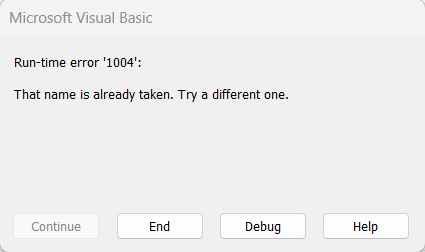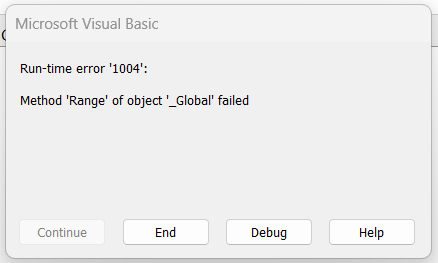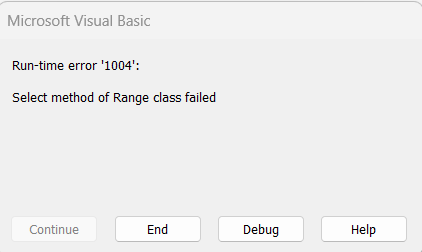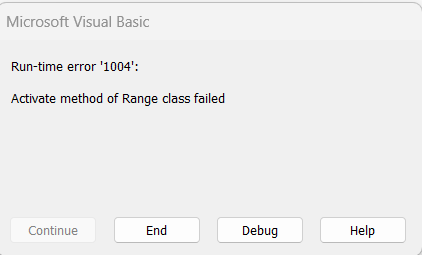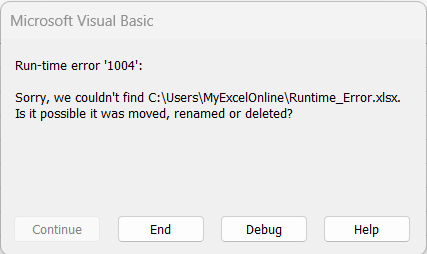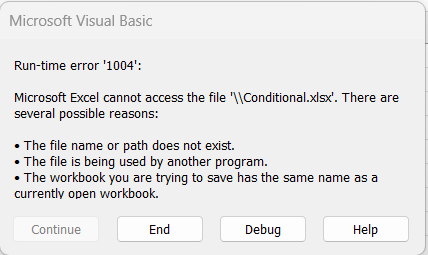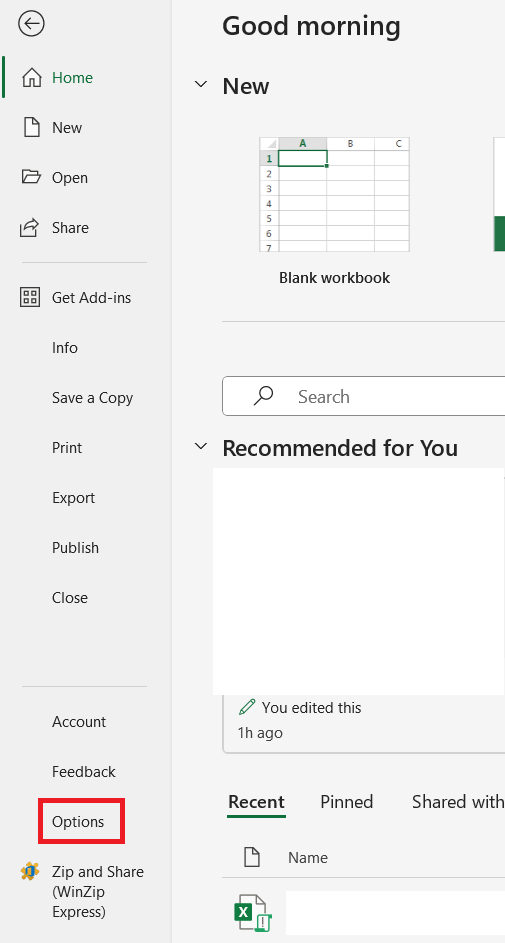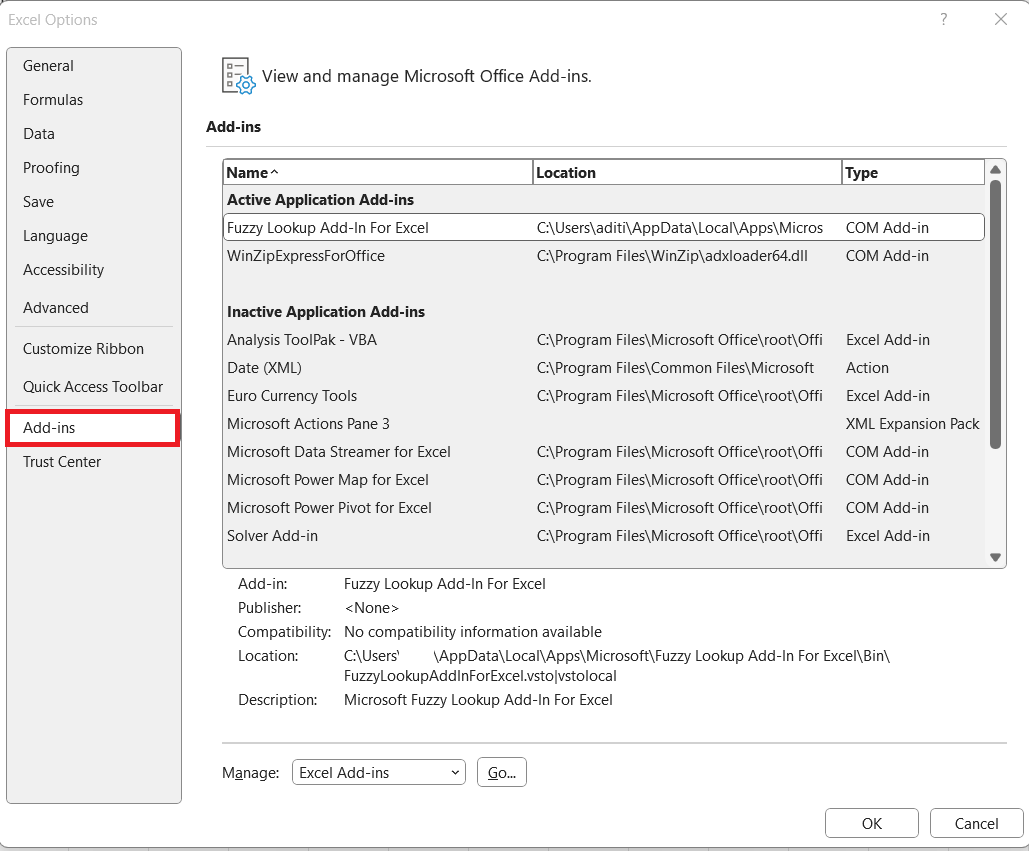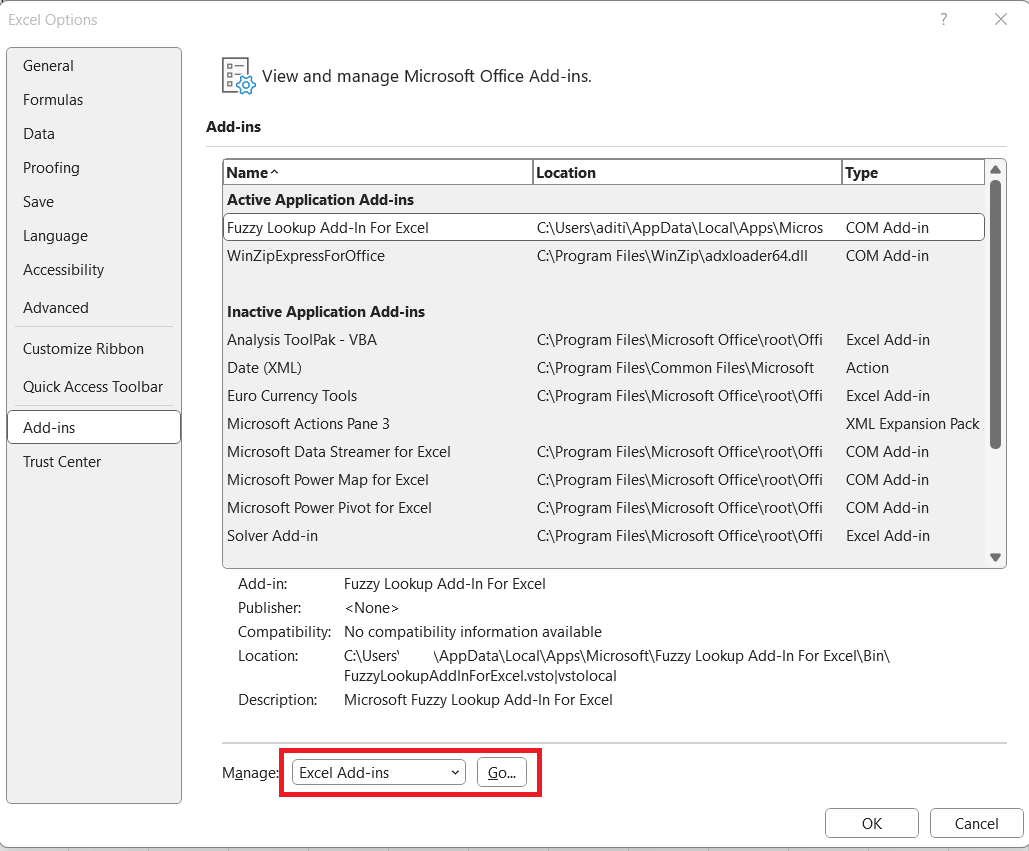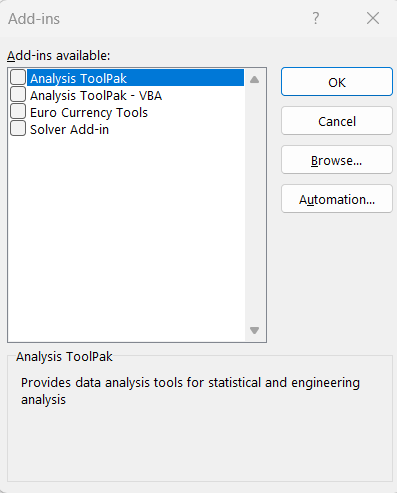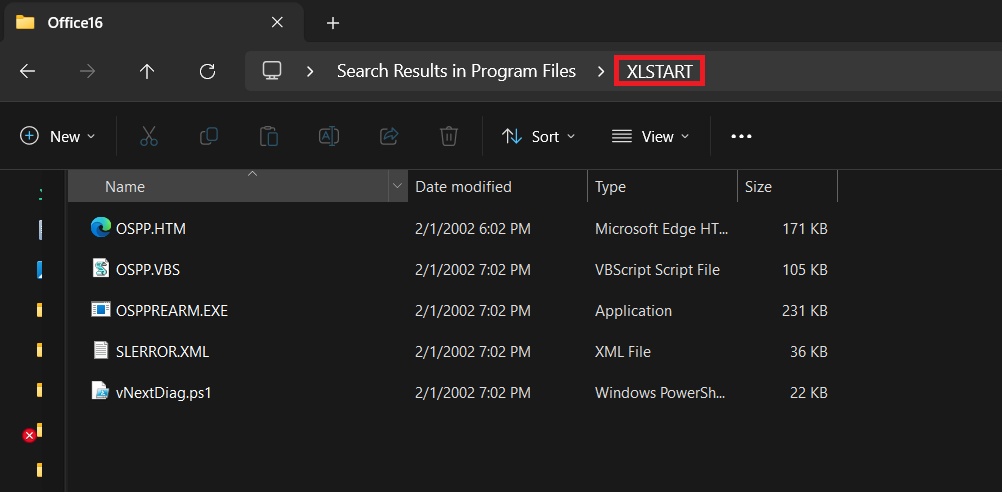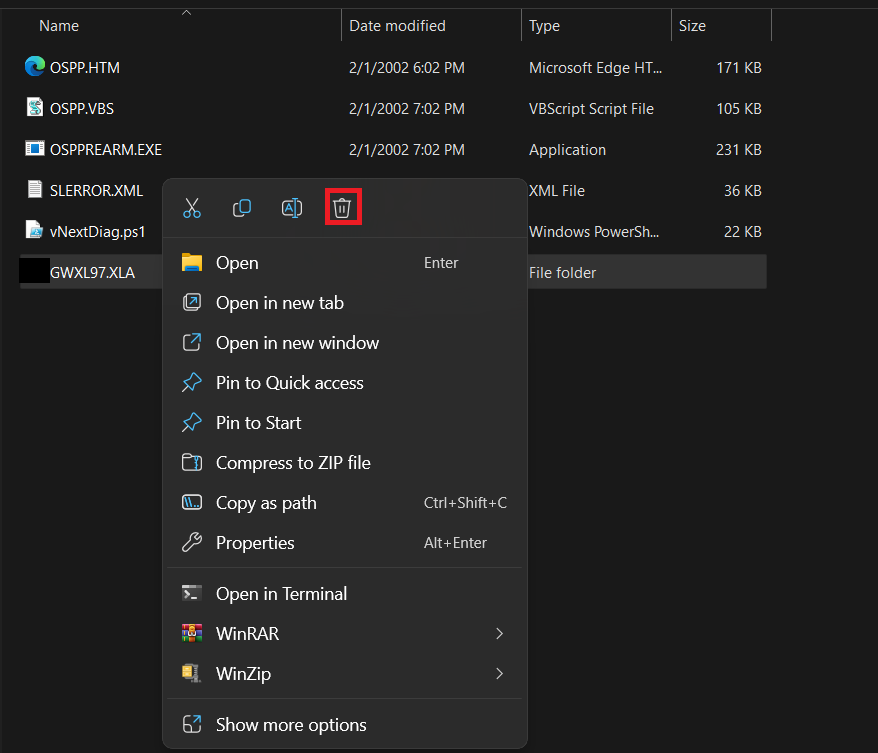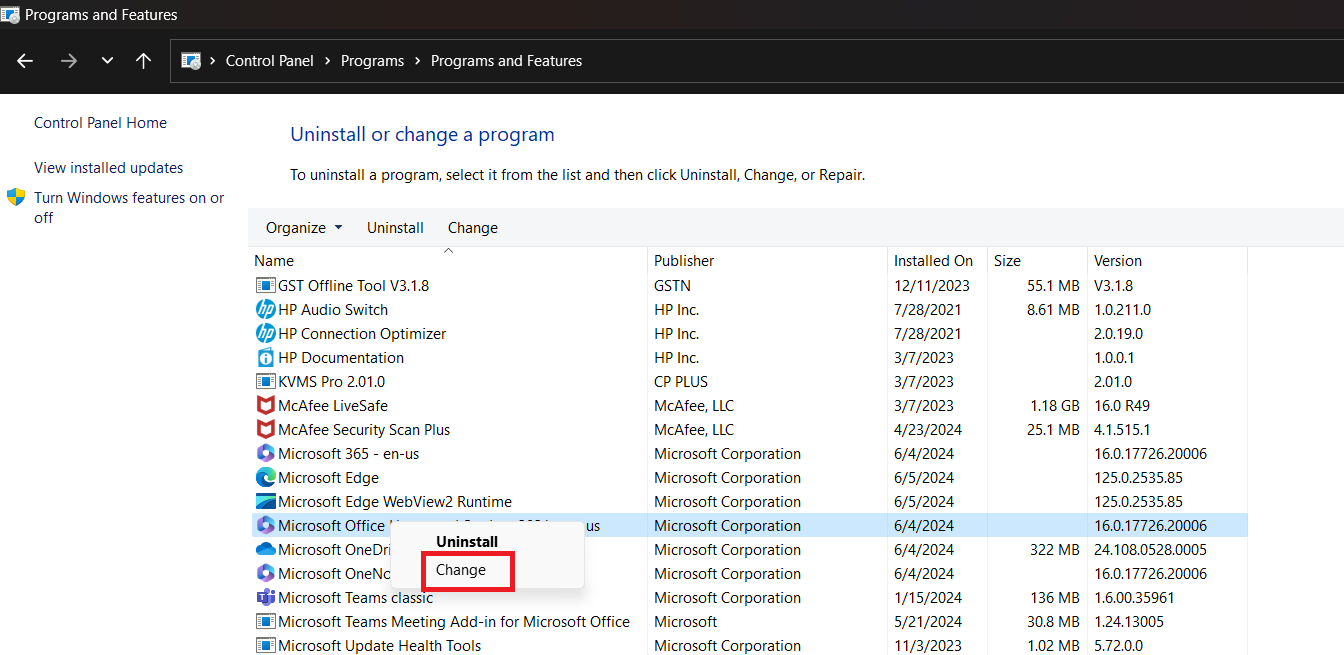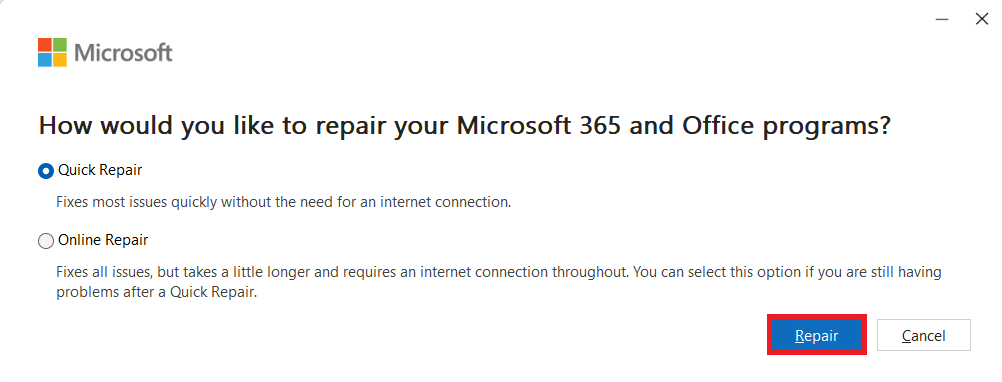Run Time Error 1004 in Microsoft Excel interrupts workflow during VBA code execution or complex data manipulation, often due to improper references or document corruption. Understanding its root causes and troubleshooting effectively can maintain smooth Excel operation. Whether dealing with macros, charts, or large datasets, being prepared for this error ensures minimal disruption.
Key Takeaways:
- Common Causes: Run Time Error 1004 typically arises from issues in VBA code, such as improperly referenced ranges or attempts to rename objects with duplicate names.
- Error Triggers: Specific actions, like trying to select a range on an inactive sheet or referencing a non-existent object, often trigger this error.
- Quick Fixes: Simple solutions include checking VBA code integrity for typos, removing problematic add-ins, and ensuring proper object references.
- Advanced Solutions: If basic troubleshooting fails, advanced steps like deleting the ‘GWXL97.XLA’ file or reinstalling Excel may be necessary.
- Prevention Tips: Regular updates, thorough debugging of VBA scripts, and maintaining clean data and add-ins can help prevent future occurrences of Run Time Error 1004.
Table of Contents
Navigating the Maze of Excel Run Time Error 1004
Decoding Error 1004: What Does It Mean for Excel Users?
Get ready for a seamless troubleshooting journey through Excel’s Run Time Error 1004. Understanding what this error means is your first step toward resolution. Picture this: You’re deep into organizing data, creating charts, or writing macros, and suddenly, a message pops up throwing you off course – that’s Run Time Error 1004.
It’s like hitting a snag in Excel’s otherwise smooth fabric. It means Excel has stumbled on a problem it can’t digest, often related to VBA code issues or document corruption. It could even be as simple as a glitch in the Matrix where Excel and your computer aren’t speaking the same language.
Common Triggers: Why Does Run Time Error 1004 Occur?
When Run Time Error 1004 rears its ugly head, it’s usually the result of a few culprits hiding in your Excel experience. Imagine trying to cook a complicated new dish without a recipe – things can go wrong quickly. Here are the common mix-ups that could lead to this error:
Error 1: That Name is Already Taken. Try a Different One
Cause: This error occurs when you attempt to name a worksheet, range, or other object with a name that already exists in the workbook. Excel does not allow duplicate names for these objects.
Sub AddSheet() Sheets.Add.Name = "Sheet1" End Sub
Solution: Before assigning a name, ensure it does not already exist.
Error 2: Method “Range” of Object ‘_Global’ Failed
Cause: This error typically arises when VBA cannot recognize the specified range. This can occur if the worksheet is not active or if the range is improperly referenced.
Sub CallObject()
Range("Table").Select
End Sub
Solution: Always qualify your range references with the appropriate worksheet object.
Error 3: Select Method of Range Class Failed
Cause: This error occurs when attempting to select a range on a worksheet that is not currently active.
Sub SelectRange()
Sheets("Sheet2").Range("B2").Select
End Sub
Solution: Activate the worksheet before selecting the range:
Error 4: Activate Method of Range Class Failed
Cause: This error is similar to the previous one and occurs when you try to activate a range that is on an inactive sheet.
Sub ActivateCell()
Sheets("Sheet2").Range("B2").Activate
End Sub
Solution: Ensure that the worksheet containing the range is active before activating the range:
Error 5: Sorry We Couldn’t Find
Cause: This error often occurs when trying to reference an object (such as a worksheet or range) that does not exist in the workbook.
Sub OpenWorkbook()
Workbooks.Open ("C:\Users\MyExcelOnline\Runtime_Error.xlsx")
End Sub
Solution: Verify the existence of the object before attempting to reference it.
Error 6: Method Open of Object Workbooks Failed
Cause: This error occurs when VBA fails to open a workbook, often due to an incorrect file path or name.
Sub ExtractData()
Dim wb As Workbook
Set wb = Workbooks.Open("\\Conditional.xlsx", ReadOnly:=True, CorruptLoad:=xlExtractData)
End Sub
Solution: Ensure the file path and name are correct. You can also handle errors gracefully.
First Aid for Your Excel Workbook
Quick Fix 1: Check Your VBA Code Integrity
Before you pull out your hair over that Run Time Error 1004, take a deep breath, and let’s peek at your VBA code. Even a minor typo can throw a wrench in the works, so ensure the integrity of your code.
Once you identify the issue, you can correct it and run your macro without that error popping up like an unwanted burnt toast. Remember, sometimes the smallest code misstep can cause the biggest headaches, so attention to detail is key.
Quick Fix 2: Uninstall Rebellious Add-Ins
If your Excel is still giving you the cold shoulder with Error 1004, let’s have a talk with those add-ins. Sometimes, they play well, and other times, they’re like the friends who lead you astray. To put them in time-out, do this:
STEP 1: Open Excel and head on over to the ‘File’ tab. It’s like swinging open the doors to the control room.
STEP 2: Click ‘Options’, a backstage VIP area where settings await your command.
STEP 3: In the Excel Options dialog box, click on ‘Add-Ins’. Here, you’ll find all the little extras that are tagging along with your Excel journey.
STEP 4: At the bottom, you’ll see a ‘Manage’ drop-down list. Select ‘Excel Add-ins‘ and click ‘Go…. This is like checking under the hood to see if everything’s running smoothly.
STEP 5: You’ll get a list of all the add-ins ticked off to tag along with Excel. Uncheck them to tell them they’re not welcome to the party anymore.
After you say goodbye to the add-ins, close Excel and restart it. This is like rebooting after a software update – it can work wonders!
Sometimes, just removing one mischievous add-in can set things right. If Error 1004 vanishes without a trace, congrats! You’ve cracked the code. If the error still messes with your workflow, fret not – there are more fixes to try.
Surgical Strikes on Stubborn Errors
Advanced Troubleshooting Step 1: Delete The “GWXL97.XLA” File
When the usual remedies don’t work, it’s time for a more targeted approach. The ‘GWXL97.XLA’ file can go rogue and cause Run Time Error 1004. Think of it like an actor forgetting their lines and throwing off the whole performance. Here’s how to bring down the curtain on this troublesome file:
STEP 1: Just like a treasure hunter, navigate to the Excel startup folder nestled at C:\Program Files\Microsoft Office\OfficeXX\XLSTART (replace XX with your version of Office).
STEP 2: Invade the folder and look for the ‘GWXL97.XLA’ file. It’s like finding the piece of the puzzle that doesn’t fit. Once you’ve uncovered this file, it’s time for it to walk the plank. Right-click and select ‘Delete’. Send it off into the digital abyss.
STEP 3: After you’ve banished the troublesome file, reboot Excel. It’s like giving the stage a fresh start for a new act.
If the runtime error bows out and takes its final exit, you’re in the clear! If it’s stubborn and stays put, another advanced step awaits your skills.
When All Else Fails: Excel Repair Tools
Repairing or Reinstalling Microsoft Excel as The Last Resort
Sometimes, despite all efforts, the only way to squash that stubborn Run Time Error 1004 is to fall back on the tried and true method of repairing or reinstalling Microsoft Excel. This is akin to giving their software a fresh start, wiping the slate clean of any lingering gremlins. Here’s what they need to do:
Repairing Excel:
STEP 1: Wander into the Control Panel and select ‘Programs’, then ‘Uninstall a program’. Think of it as going into the engine room of their software ship.
STEP 2: They’ll find Microsoft Office on the program list. Click ‘Change’ and a menu will appear – this is their repair kit.
STEP 3: They can choose ‘Quick Repair’ for a swift fix or ‘Online Repair’ for a deep cleanse. Either way, they’re sprucing up their Excel installation.
Sit back and let the repair wizard work its magic, and then restart their computer. Voila, they should have a rejuvenated Excel ready for duty!
Reinstalling Excel:
STEP 1: If all else fails, it’s time to bring out the big guns – a full reinstall.
STEP 2: Follow the first two steps above, but this time, they’ll be uninstalling Office entirely.
STEP 3: Once the uninstall is complete and their machine is Microsoft Office-free, they’ll want to dust off their Office installation media or download a fresh copy from the Microsoft Office website.
STEP 4: Run the installer and follow the on-screen prompts to breathe new life into their workspace with a pristine Excel installation.
This fix is like rebooting their entire Excel experience – tedious, perhaps, but often the surest way to banish those error messages to the land of digital myths and legends.
Surviving Excel Run Time Errors – An Ounce of Prevention
Tips to Ward Off Future Run Time Error 1004 Issues
To keep their Excel journey smooth sailing and Run Time Error 1004 at bay, they can follow these navigational tips:
- Stay Clean with Data Validation: Keeping data entry tight and right means Excel won’t trip over messy data. It’s like having a bouncer at the door, only letting the good data in.
- Debug Like a Pro: Regularly test their VBA scripts in a sandbox environment before going live. It’s practicing their dance moves before hitting the stage.
- Regular Updates: Keeping Excel up to date is like getting their car serviced – it keeps everything running smoothly, and they might even get some new bells and whistles.
- Monitor System Resources: Keep an eye on their computer’s resources. Excel can be a bit of a diva, demanding its share of system memory. Closing other apps can prevent Excel from throwing a tantrum.
- Excel Hygiene: Regular tidying up of their Excel environment, like removing unused add-ins or templates, keeps it clean and uncluttered. A tidy Excel is a happy Excel.
Incorporating these tips into their routine can turn today’s date into a milestone – the day they proactively defended against future headaches caused by Run Time Error 1004.
The Importance of Regular File Backups and Updates
A stitch in time saves nine, and nowhere is this proverb more applicable than when it comes to regular Excel file backups and software updates. It’s their safety net for preserving their painstakingly curated data and ensuring a smooth operation.
Why regular backups are a lifesaver:
- Imagine if all their hard work just vanished into thin air due to an unexpected error or system crash. Regular backups act like snapshots of their progress, keeping their efforts secure.
- Backups can be their time machine, allowing them to undo mistakes by reverting to a previous version of their work.
- Options like OneDrive, Google Drive, or external hard drives mean that even if their primary device fails, their data remains untouched and accessible.
Why keeping Excel up to date is vital:
- Each update often comes armed with security patches, protecting them from the latest cyber threats that can compromise their data integrity.
- Software updates can also bring new features and smoother functionality for a more efficient and less error-prone experience.
- Being up to date can help them avoid the software incompatibility tango. New is always better when their workflow is on the line.
Marinating in the habit of regular backups and embracing each new update will sculpt today’s date in their memory as the start of an error-lite era in their Excel usage.
FAQ: Taming Excel’s Run Time Error 1004
What is run-time error 1004?
Run-time error 1004 is a vexing issue in Excel that pops up when there’s a hiccup with VBA code or the application is flustered by what it’s asked to do. It’s like a “Sorry, I didn’t catch that” from your diligent digital assistant, Excel – both confusing and frustrating in equal measure.
How to fix error 1004 in Excel?
To fix error 1004 in Excel, try checking and correcting any VBA code mishaps, removing problematic add-ins, or deleting the ‘GWXL97.XLA’ file. If those don’t work, creating a fresh Excel template or using a file repair tool could do the trick.
Why am I getting a runtime error in 1004 VBA?
You’re likely facing a runtime error in 1004 VBA due to sneaky bugs in your macro code, conflicts with other software, or because Excel’s been asked to do something it just can’t digest. Check your code and your Excel environment to straighten things out.
How can I identify if the error is due to a corrupt Excel file?
To identify if the error is due to a corrupt Excel file, look for signs like trouble opening the file, erratic behavior, or repeated errors. A file repair tool can diagnose and confirm if corruption is the culprit.
Are there preventive measures to avoid facing Run Time Error 1004 in the future?
Absolutely! As a preventive measure, always validate input data, thoroughly test and debug VBA code, keep Excel updated, and monitor your system’s resources to keep Error 1004 at bay. It’s all about being proactive rather than reactive.
John Michaloudis is a former accountant and finance analyst at General Electric, a Microsoft MVP since 2020, an Amazon #1 bestselling author of 4 Microsoft Excel books and teacher of Microsoft Excel & Office over at his flagship MyExcelOnline Academy Online Course.

